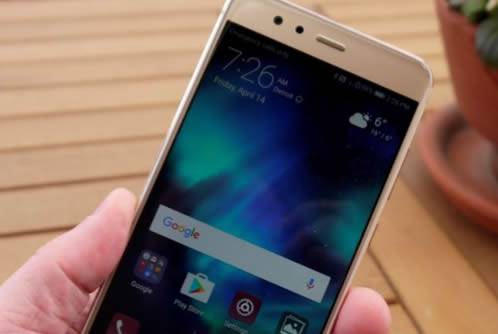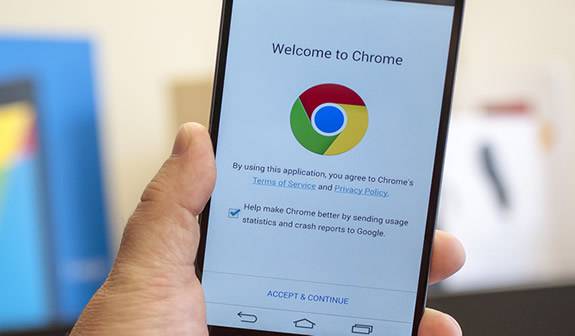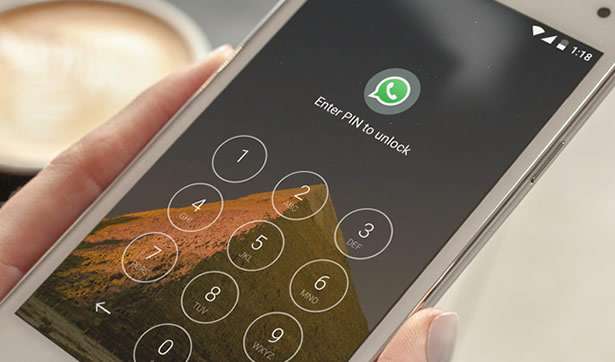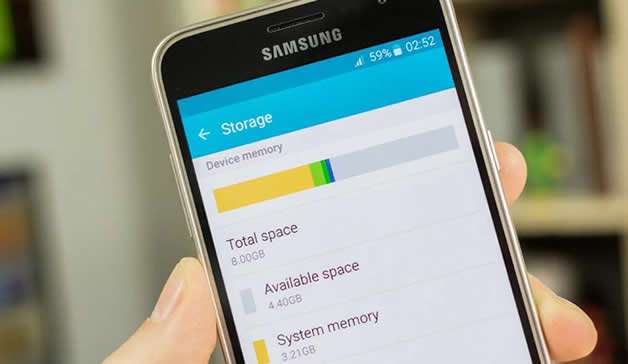To turn off photo backup on Android, you can follow these steps:
1. Open the Settings app on your Android device.
2. Tap Accounts and then Google.
3. Select the account that you want to disable photo backups for, then tap Photos under Services & Apps section in the menu.
4. Toggle “Back up & sync” off and confirm when prompted if you want to turn it off or not by tapping OK/Disable button at the bottom of the page (depending on your version of Android).
5. This will disable all backups for photos taken with this account from now onwards and also delete any existing backups associated with it from Google Drive or other cloud services that were automatically uploaded when enabled before turning them off again as per step 4 above .
How do I stop Google Photos saving photos?
What happens if I turn off backup and sync on Google Photos?
If you turn off backup and sync on Google Photos, the photos you have already backed up to Google Photos will remain in your library. However, any new photos that are taken and stored on your device will not be automatically uploaded or synced with Google Photos. To ensure all of your photos are backed up and accessible from any device, it is recommended to keep backup and sync turned on.
How do I stop my Android phone from backing up?
If you would like to stop your Android phone from backing up, there are a few steps you can take. Firstly, open the settings on your device and select the “Backup & Reset” option. If this is enabled, it will automatically back up any changes you make to your phone settings or data. You can then disable the automatic backup setting by sliding the toggle switch beside Backup my data off. Additionally, if you wish to stop apps from being backed up as well, simply tap on Select Apps and uncheck each of them individually. After making these changes be sure to Save them before exiting out of Settings completely.
Why does Google Photos keep backing up?
Google Photos is a powerful cloud-based photo storage and sharing app that helps users keep their photos safe, organized, and easily accessible. One of its key features is the ability to continuously back up photos from your connected devices, so that you never lose any important memories. This can be extremely helpful in ensuring all your photos are always available whenever you need them. However, it’s also important to know why Google Photos keeps backing up and how to manage this feature for optimal performance.
The primary reason why Google Photos keeps backing up is because it’s designed to ensure all of your images are saved regardless of where they originated from or where they were stored before uploaded into the app. When a new device (e.g., phone or tablet) is linked with the app, all existing images on that device will be automatically backed up as part of the initial setup process. Afterwards, each time an image is added to the device or taken directly via the camera within Google Photos itself, it will be immediately backed up into your account – even if some previously-uploaded images have been deleted since then.
To manage this feature properly and avoid unnecessary backups taking place over time due to redundant content being saved multiple times (such as when re-uploading old pictures), users should take advantage of several options provided by Google Photos:
1) Set limits on how much storage space should be used for backup purposes: Users can adjust settings within their accounts which determine how much storage capacity will be allocated towards photo backups; this allows users to control not only how much data gets backed up but also save money by avoiding extra fees associated with exceeding free plan quotas at higher levels than necessary due turning off auto sync/backup functions entirely would require manual intervention every single time one wants something uploaded again after deleting some other items already present in their library).
2) Choose which folders/devices should remain synced: Under Settings > Backup & Sync tab there’s an option called “Choose folders & devices” which shows all currently linked devices along with specific folders inside each one that are eligible for automatic synchronization – allowing users further customize exactly what gets included in backups going forward without having manually select individual files every now and then); alternatively unlink unwanted sources altogether so nothing else ever comes through those connections anymore either way! Finally remember these changes won’t apply retroactively meaning anything already present prior making adjustments still remains unaffected unless explicitly deleted afterwards too).
3) Turn off Auto Backup entirely: If none of these solutions seem suitable (or desired), then simply navigate back under Settings > Backup & Sync tab once more but instead toggle OFF switch located next “Backup my photos & videos” text entry box
How do I stop photos from automatically syncing to Google Photos?
Google Photos offers a range of features to make managing your photos easier, including the ability to automatically sync them from your device. However, if you don’t want this feature enabled for whatever reason, there are some simple steps you can take to stop it.
To disable auto-sync in Google Photos:
1. Open the Google Photos app on your device and go to Settings > Back up & Sync.
2. Toggle off “Back up & Sync” to stop all future photos from syncing automatically with Google Photos until you turn it back on again later.
3. You can also choose whether or not new videos and photos will be uploaded over Wi-Fi only or using mobile data as well by tapping either option beneath “Back up & Sync”.
Once these settings have been updated, any future photo uploads will no longer happen automatically unless manually initiated by selecting Upload in the top right corner of the main menu within Google Photos itself!
Will deleting photos from Google Photos delete from phone?
No, deleting photos from Google Photos will not delete them from your phone. If you want to delete a photo from both Google Photos and your phone, you’ll need to manually delete the photo on both devices. To do this, open the Google Photos app on your mobile device, select the image you want to remove and tap the ‘Trash’ icon. This will move the photo into trash in Google Photos. Then go back to your phone’s storage and find that same photo – it should still be there – then delete it manually from there too.
How do I stop Google Photos Backup without deleting?
It is possible to stop Google Photos Backup without deleting existing photos or videos. To do this, you will need to access the application settings and turn off the “Back up & Sync” feature. Here are the steps to follow:
1. Open your Google Photos app on your device.
2. Tap on the hamburger icon (three lines) in the top left corner of the screen and select Settings from the drop-down menu that appears.
3. Tap Back up & Sync from within Settings and toggle it off if it’s currently enabled – this will effectively disable any further automatic backups but won’t delete existing content already backed up in Google Photos for you.
Does deleting photos from Google Photos delete from phone?
No, deleting photos from Google Photos will not delete them from your phone. However, if you want to keep the same number of photos on both platforms, you can back up your mobile photos to Google Photos and then sync the two accounts. This way any time a photo is deleted from one platform it will also be deleted from the other. Here are some steps for backing up and syncing your devices:
1. Install Google Photos on your device and sign in with your Google account
2. Select “Backup & Sync” within Settings so that all of the pictures taken with or stored in your device appear in Google Photos
3. To ensure ongoing synchronization between devices, make sure that Backup & Sync is always enabled
4. You may need to manually select which albums should be backed up (this step depends on what type of phone/device you are using)
By following these steps, any changes made to either account should automatically update across both accounts – meaning that when a photo is removed from one platform it will also be removed from other linked devices as well.
{“@context”:”https://schema.org”,”@type”:”FAQPage”,”mainEntity”:[{“@type”:”Question”,”name”:”What happens if I turn off backup and sync on Google Photos?”,”acceptedAnswer”:{“@type”:”Answer”,”text”:”nnIf you turn off backup and sync on Google Photos, the photos you have already backed up to Google Photos will remain in your library. However, any new photos that are taken and stored on your device will not be automatically uploaded or synced with Google Photos. To ensure all of your photos are backed up and accessible from any device, it is recommended to keep backup and sync turned on.”}},{“@type”:”Question”,”name”:”How do I stop my Android phone from backing up?”,”acceptedAnswer”:{“@type”:”Answer”,”text”:”nnIf you would like to stop your Android phone from backing up, there are a few steps you can take. Firstly, open the settings on your device and select the u201cBackup & Resetu201d option. If this is enabled, it will automatically back up any changes you make to your phone settings or data. You can then disable the automatic backup setting by sliding the toggle switch beside Backup my data off. Additionally, if you wish to stop apps from being backed up as well, simply tap on Select Apps and uncheck each of them individually. After making these changes be sure to Save them before exiting out of Settings completely.”}},{“@type”:”Question”,”name”:”Why does Google Photos keep backing up?”,”acceptedAnswer”:{“@type”:”Answer”,”text”:”nnGoogle Photos is a powerful cloud-based photo storage and sharing app that helps users keep their photos safe, organized, and easily accessible. One of its key features is the ability to continuously back up photos from your connected devices, so that you never lose any important memories. This can be extremely helpful in ensuring all your photos are always available whenever you need them. However, it’s also important to know why Google Photos keeps backing up and how to manage this feature for optimal performance. nnThe primary reason why Google Photos keeps backing up is because it’s designed to ensure all of your images are saved regardless of where they originated from or where they were stored before uploaded into the app. When a new device (e.g., phone or tablet) is linked with the app, all existing images on that device will be automatically backed up as part of the initial setup process. Afterwards, each time an image is added to the device or taken directly via the camera within Google Photos itself, it will be immediately backed up into your account u2013 even if some previously-uploaded images have been deleted since then. nnTo manage this feature properly and avoid unnecessary backups taking place over time due to redundant content being saved multiple times (such as when re-uploading old pictures), users should take advantage of several options provided by Google Photos: nn 1) Set limits on how much storage space should be used for backup purposes: Users can adjust settings within their accounts which determine how much storage capacity will be allocated towards photo backups; this allows users to control not only how much data gets backed up but also save money by avoiding extra fees associated with exceeding free plan quotas at higher levels than necessary due turning off auto sync/backup functions entirely would require manual intervention every single time one wants something uploaded again after deleting some other items already present in their library). nn 2) Choose which folders/devices should remain synced: Under Settings > Backup & Sync tab thereu2019s an option called u201cChoose folders & devicesu201d which shows all currently linked devices along with specific folders inside each one that are eligible for automatic synchronization u2013 allowing users further customize exactly what gets included in backups going forward without having manually select individual files every now and then); alternatively unlink unwanted sources altogether so nothing else ever comes through those connections anymore either way! Finally remember these changes won’t apply retroactively meaning anything already present prior making adjustments still remains unaffected unless explicitly deleted afterwards too). nn 3) Turn off Auto Backup entirely: If none of these solutions seem suitable (or desired), then simply navigate back under Settings > Backup & Sync tab once more but instead toggle OFF switch located next u201cBackup my photos & videosu201d text entry box”}},{“@type”:”Question”,”name”:”How do I stop photos from automatically syncing to Google Photos?”,”acceptedAnswer”:{“@type”:”Answer”,”text”:”nnGoogle Photos offers a range of features to make managing your photos easier, including the ability to automatically sync them from your device. However, if you don’t want this feature enabled for whatever reason, there are some simple steps you can take to stop it. nnTo disable auto-sync in Google Photos: n1. Open the Google Photos app on your device and go to Settings > Back up & Sync. n2. Toggle off u201cBack up & Syncu201d to stop all future photos from syncing automatically with Google Photos until you turn it back on again later. n3. You can also choose whether or not new videos and photos will be uploaded over Wi-Fi only or using mobile data as well by tapping either option beneath “Back up & Sync”. nnOnce these settings have been updated, any future photo uploads will no longer happen automatically unless manually initiated by selecting Upload in the top right corner of the main menu within Google Photos itself!”}},{“@type”:”Question”,”name”:”Will deleting photos from Google Photos delete from phone?”,”acceptedAnswer”:{“@type”:”Answer”,”text”:”nNo, deleting photos from Google Photos will not delete them from your phone. If you want to delete a photo from both Google Photos and your phone, you’ll need to manually delete the photo on both devices. To do this, open the Google Photos app on your mobile device, select the image you want to remove and tap the ‘Trash’ icon. This will move the photo into trash in Google Photos. Then go back to your phone’s storage and find that same photo u2013 it should still be there u2013 then delete it manually from there too.”}},{“@type”:”Question”,”name”:”How do I stop Google Photos Backup without deleting?”,”acceptedAnswer”:{“@type”:”Answer”,”text”:”nnIt is possible to stop Google Photos Backup without deleting existing photos or videos. To do this, you will need to access the application settings and turn off the u201cBack up & Syncu201d feature. Here are the steps to follow: n1. Open your Google Photos app on your device. n2. Tap on the hamburger icon (three lines) in the top left corner of the screen and select Settings from the drop-down menu that appears. n3. Tap Back up & Sync from within Settings and toggle it off if itu2019s currently enabled u2013 this will effectively disable any further automatic backups but wonu2019t delete existing content already backed up in Google Photos for you.”}},{“@type”:”Question”,”name”:”Does deleting photos from Google Photos delete from phone?”,”acceptedAnswer”:{“@type”:”Answer”,”text”:”nnNo, deleting photos from Google Photos will not delete them from your phone. However, if you want to keep the same number of photos on both platforms, you can back up your mobile photos to Google Photos and then sync the two accounts. This way any time a photo is deleted from one platform it will also be deleted from the other. Here are some steps for backing up and syncing your devices: nn1. Install Google Photos on your device and sign in with your Google accountn2. Select u201cBackup & Syncu201d within Settings so that all of the pictures taken with or stored in your device appear in Google Photos n3. To ensure ongoing synchronization between devices, make sure that Backup & Sync is always enabled n4. You may need to manually select which albums should be backed up (this step depends on what type of phone/device you are using) nnBy following these steps, any changes made to either account should automatically update across both accounts – meaning that when a photo is removed from one platform it will also be removed from other linked devices as well.”}}]}







